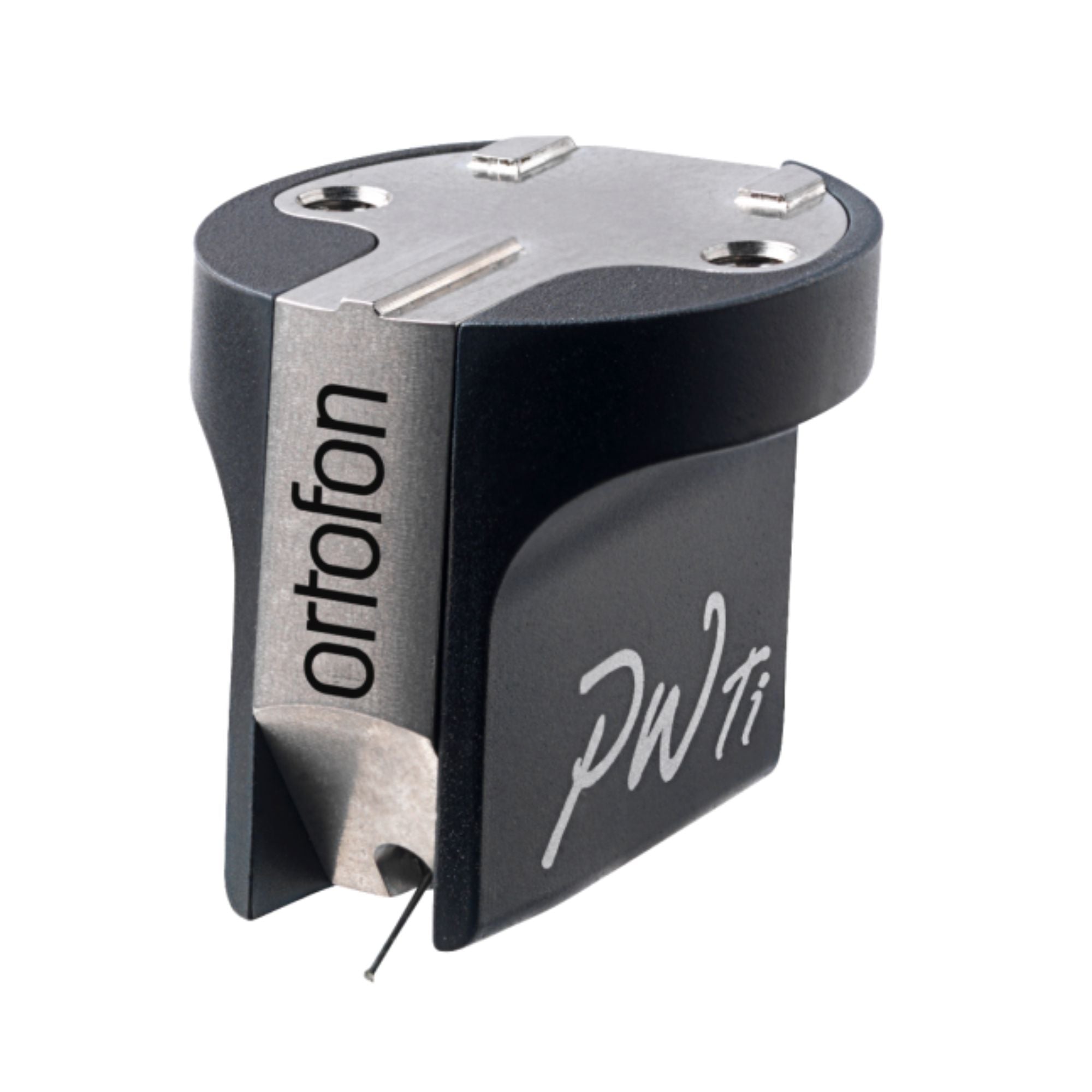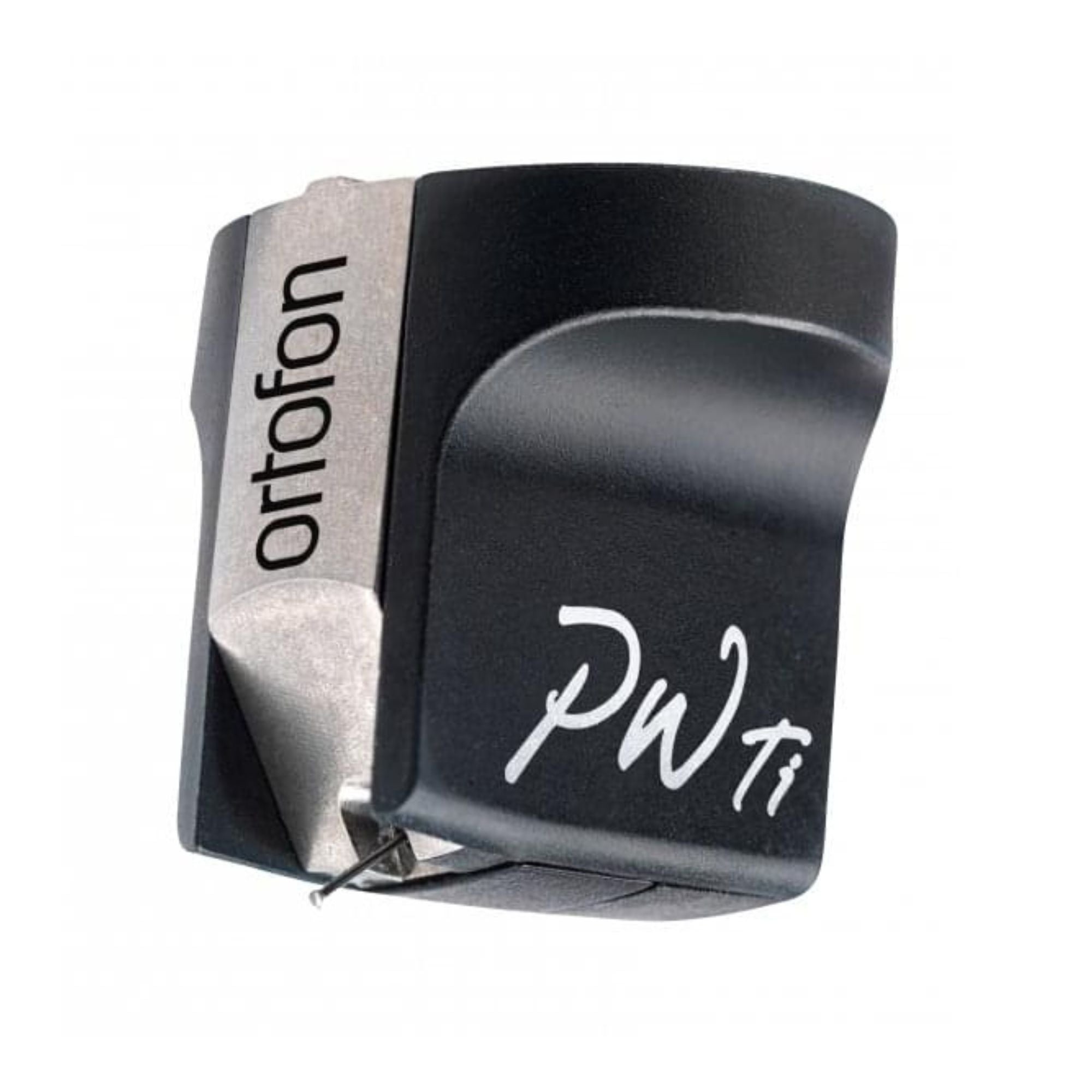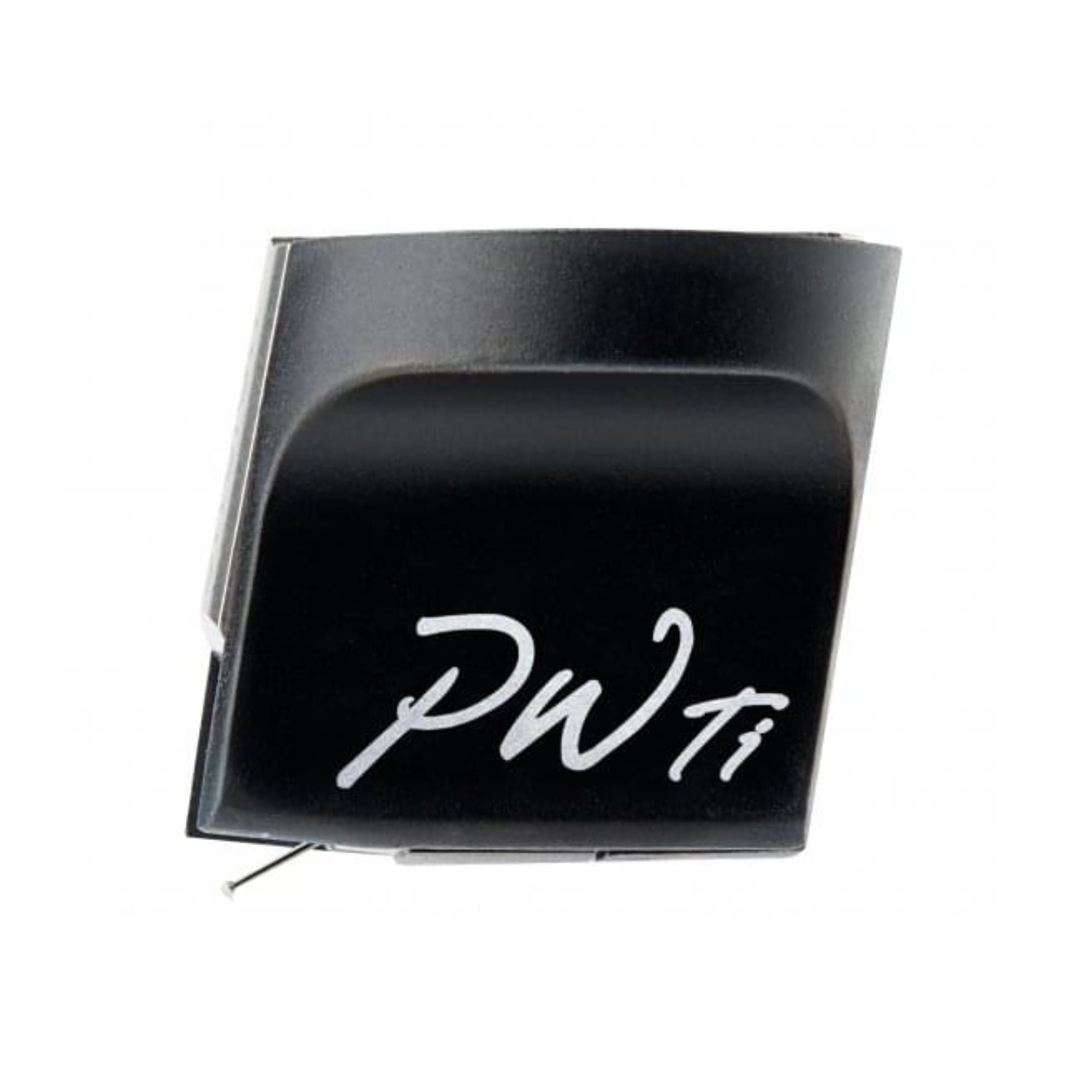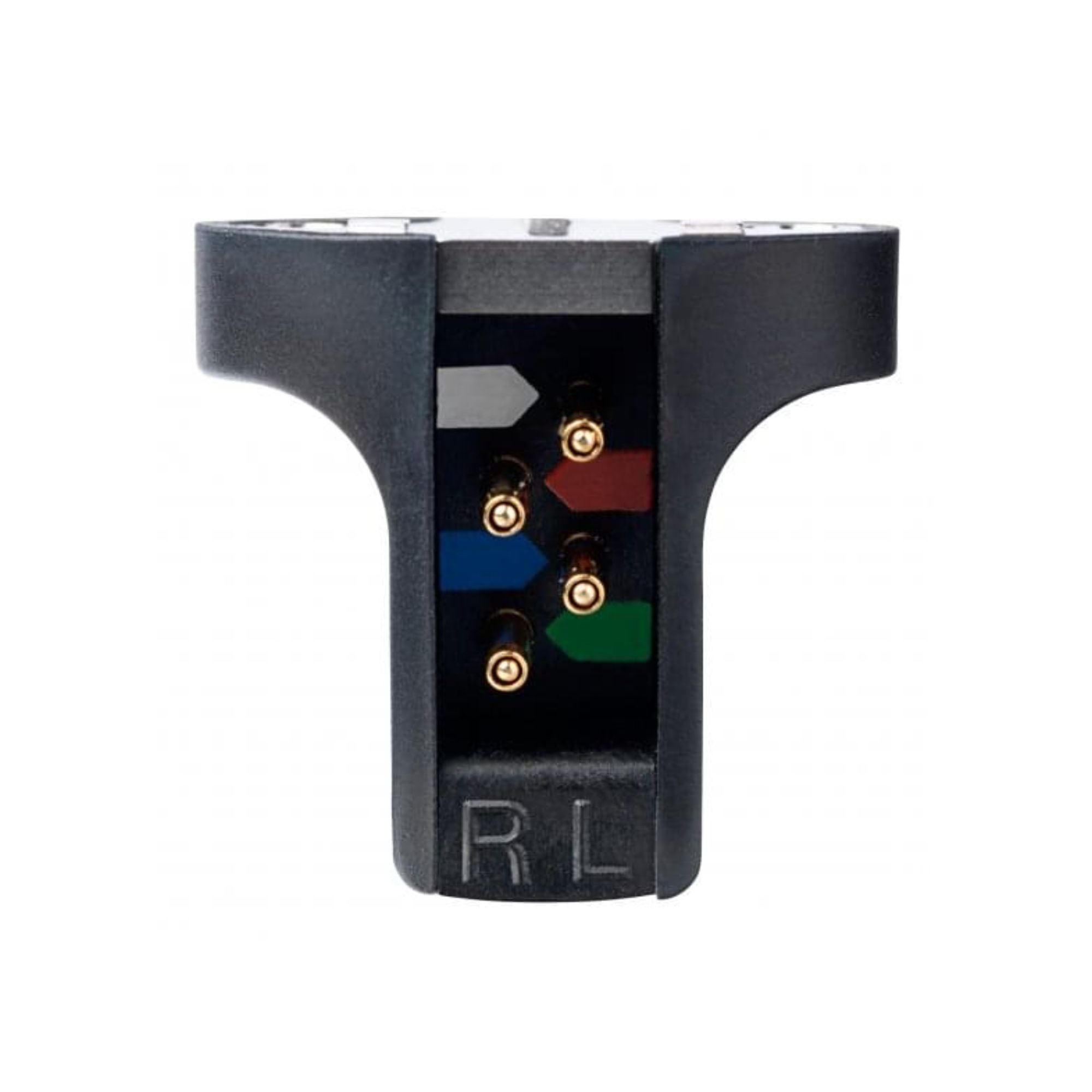




Ortofon MC Windfeld Ti - Moving Coil Cartridge
Includes GST of Rs. 109,831

GET GST INPUT
Ever wondered why speakers, amplifiers, projectors etc. come with a slightly heftier price tag in India compared to their overseas counterparts? Well, part of the answer lies in our country's Goods & Services Tax (GST).
But here's the kicker: Don't let that GST input slip through your fingers! Especially when some of the products we supply carry a GST rate of 18% and 28%.
At AVStore, we provide you with a GST compliant invoice for every purchase.
Simply put in your GST number during the checkout to avail an offset.

- Description
- Specifications
- Reviews
The MC Windfeld Ti - a moving coil phono cartridge in the absolute high-end class
Ortofon’s extensive knowledge of vibration properties, characteristics in different shapes and materials, competences in magnetism, mechanical design and new technologies has been applied for optimization of the MC Windfeld model. The MC Windfeld Ti has gone to the next level by reducing unwanted vibrations and increasing the dynamic capability of the cartridge.
Those who choose to adopt the MC Windfeld Ti will experience the lifelike, dynamic and open sound, with exceedingly clear midrange. The MC Windfeld Ti remains extremely musical while paying close attention to micro dynamic details, with its delicate, but also analytical nature.
The MC Windfeld Ti technology
The MC Windfeld Ti phono cartridge was introduced in 2017 as a continuous tribute to Ortofon's former engineer Mr. Windfeld and optimization of the MC Windfeld model launched in 2008.
At the heart of the MC Windfeld Ti lies Selective Laser Melting technology, apllied for manufacturing of the Ortofon Exclusives Series cartridges.
The use of Titanium in the MC Windfeld Ti has provided a further improvement to the overall rigidity of the structure and the cartridge weight. Obviously, MC Windfeld Ti has gone to the next level by reducing unwanted vibrations and increasing the dynamic capability of the cartridge.
In this episode Leif Johannsen, the Ortofon's Chief Acoustics and Development, accurately compares the two MC Windfeld models with the focus on the benefits of the new technologies and materials.
The mechanical integration of the MC Windfeld Ti
Historically, Ortofon has always followed its own path with regard to the mechanical design of the cartridge housing, because mechanical rigidity and total freedom from resonance in the audible range are a precondition for optimal sound quality.
In the MC Windfeld Ti the cartridge’s contact with the tonerarm takes place through three hard, well-defined contact points placed on the fastening section of the cartridge. This means that the mechanical integration of the cartridge and the tonearm arm are always absolutely perfect.
Flexibility and performance with a range of compatibility
With optimized weight and moderate compliance to suit the majority of modern tonearms, the MC Windfeld Ti is easy compatible with an endless array of contemporary high-end turntable equipment, including the Ortofon TA-210 and TA-110 tonearms.
A low output impedance of 7 ohm and a medium output voltage of 0.2 mV makes the Ortofon MC Windfeld Ti a perfect partner for most MC pre-amps as well as step-up transformers, including the Ortofon ST-80 SE.
When combined with Ortofon’s world-class knowledge in analogue sound reproduction, The MC Windfeld Ti will undoubtedly provide sound which is literally unsurpassed and simply has to be experienced.
MC Windfeld Ti is available through Ortofon Authorised HiFi dealers. Ortofon’s authorized dealers have comprehensive knowledge and experience in use of Ortofon products and associated equipment, offer high standard customer service and comply with Ortofon Aftersales.
Benefits of high-end materials and advancements in technology
The SLM technology and high precision process eschews traditional techniques considered an engineering breakthrough, the SLM process welds fine particles of Titanium together, layer-by layer, to construct a single piece body devoid of extraneous material. This technique allows for precise control of the density of the body material, allowing for extremely high internal damping. The final result provides freedom over vibrations within the cartridge body material.
The use of Titanium in the MC Windfeld Ti has provided a further improvement to the overall rigidity of the structure, the cartridge weight and its dynamic capability.
The magnet system is based on an extremely strong, compact neodymium magnet, which makes the generator system both compact and lighter through its minimal dimensions.
Inspired by the elements of MC A95 design, the MC Windfeld Ti makes use of a specially designed armature comprised of a metal alloy which is less magnetic than normal iron. This provides noteworthy benefit to the dynamic capabilities of the cartridge. The reason for this is that Ortofon’s high-tech armature has almost no influence on the magnetic field during movement. Hence when combined with the Aucurum coils of gold-plated 6NX oxygen free copper, it delivers perfect reproduction of the cantilever movements without compromise. Any trace of remaining magnetic influences that would create distortion is prevented by the use of a Field Stabilizing Element (FSE) - a small cylinder of conductive material strategically placed inside the magnet system, which guarantees that the force field remains stable regardless of the movement of the armature. FSE improves the channel separation, while at the same time minimizing dynamic distortion and intermodulation.
Increase in dynamics, resolution and richness in detail
One of the important components is Ortofon’s patented Wide Range Damping system (WRD), in which a small, heavy platinum disc is sandwiched between two rubber absorbers, both with different properties. This ensures not only an exceptional tracking performance, but also creates a perfect damping through the entire frequency range. Because of this, distortion and resonance are virtually eliminated.
The WRD system, which was originally introduced in the MC 20 Mk II in 1979 and was also used in the Exclusive Series cartridges, is one significant reason why the MC Windfeld Ti, while achieving the most linear frequency response and the highest upper frequency limit ever, at the same time tracks a fantastic 90 μm at a vertical tracking force of 2.3 grams.
Extremely high end materials benefit new coil technology
Using Ortofon’s Aucurum coils of gold-plated, 6NX oxygen free copper allows for zero-loss transmission of the diamond’s movements via its Boron cantilever. This combination, which has also been employed for use in the MC Windfeld, MC A90 and MC A95 cartridges, combines low moving mass with an extremely high degree of rigidity.
A specially designed armature used to achieve extreme precision in each coil turn in all layers. This enables the MC Windfeld Ti to achieve a higher degree of channel separation, while simultaneously offering lower distortion and better channel balance. A low output impedance of 7 ohm and a low output voltage of 0.2 mV makes the Ortofon MC Windfeld Ti a perfect partner for most step-up transformers as well as active MC pre-amps.
Zero resonance cartridge
Historically, Ortofon has always followed its own path with regard to the mechanical design of the cartridge housing, because mechanical rigidity and total freedom from resonance in the audible range are a precondition for optimal sound quality. In the MC Windfeld Ti the cartridge’s contact with the tonerarm takes place through three hard, well-defined contact points placed on the fastening section of the cartridge. This means that the mechanical integration of the cartridge and the tonearm arm are always absolutely perfect.
The MC Windfeld Ti is also unique in cosmetic terms: the parts of the cartridge housing are produced with matte black surfaces. The fastening section made in raw Titanium is distinct in silver color. The underside facing the record is covered by a new shield, which reinforces the mechanical structure. Per Windfeld’s characteristic initials in silver accompanied by the letters “Ti” (Titanium) adorn the sides of the cartridge housing, paying tribute to Windfeld’s legacy while at the same time signifying the technological advancements which create a new standard of analog performance.
Ortofon Replicant 100 - the finest diamond in the world
Another precondition for linear reproduction with a wide frequency range and optimal tracking performance is a diamond - the shape of which is as close as possible to the original cutting stylus.
As featured in the entire Exclusive Series, the MC Windfeld Ti makes use of Ortofon’s Replicant 100 diamond, known for its thin and light profile and extraordinarily large vertical contact surface. Since the Replicant 100 is closest to the shape of the cutting stylus, it can trace with accuracy unparalleled by any other stylus in existence. Special polishing of the diamond along with the use of a Boron cantilever offer remarkable transparency, speed, and responsiveness beyond that of any other combination.
Stylus lifetime
With proper care they find that up to 1000 hours is possible without degradation of performance. The stylus does begin to exhibit changes after 1.000 hours, but the stylus life as a whole is expected to top 2.000 hours.
Proper care comprises the following
- Cleaning of record by means of carbon fibre brush before and after every use. Cleaning of record by using record cleaning machine once in a while.
- Cleaning of stylus by means of a fine antistatic brush. Please remember to remove dust from the diamond tip before and after playback of each record.
- Proper adjustment of antiskating, azimuth and tracking force.
The stylus guard provided for the MC Windfeld Ti is designed to be easily replaced and removed without risking contact to the fragile stylus assembly. To avoid accidental damage to the stylus or cantilever please mount the enclosed stylus guard onto the cartridge whenever the cartridge is not in use. The stylus guard should also be attached during mounting or removal of the cartridge.
Stylus care
Ortofon does not recommend the use of solvents of any kind for cleaning of either the record surface or stylus. If necessary, records may be washed in lukewarm demineralized water with a dash of sulphonic soap. Remove dust carefully from record surfaces by using a fine antistatic brush or cloth before every use. The use of solvents on the stylus and cantilever may damage stylus cement; interior parts of the cartridge can be affected seriously by the intrusion of solvents. The Ortofon warranty will not be valid in cases where such treatment has caused malfunction.
For cleaning the stylus, use the enclosed fibre brush a few times along the cantilever in the direction of the stylus, whenever you play a new record or change sides. Record care should also be performed regularly and is of paramount importance to prolong the life and condition of the stylus. Because of this, a record cleaning machine may be considered for ease and quality of record cleaning.
The MC Windfeld Ti set-up and maintenance
As with any cartridge, setup is absolutely crucial in order to ensure the best sound reproduction capabilities. Although there are many valid paradigms that exist with regard to cartridge setup, Ortofon does not endorse a specific methodology and encourages users to explore the options as suggested by their high end audio dealer, including professional setup.
In addition to alignment, consideration must be made to adjust azimuth, anti-skating and VTA in order to maximize the potential performance of any high end cartridge.
STYLUS RAKE ANGLE (SRA)
With a complex stylus shape like the Replicant 100, there must be special attention paid to positioning the diamond in the groove.
The Stylus Rake Angle (SRA - see figure) is very important to the performance of the Replicant 100 stylus, and the long contact surface (the sharp edge) of the diamond should be almost perpendicular to the record surface when viewed from the side. The angle between the record surface and the cantilever is close to 23 degrees when SRA is 90 degrees.
A perfect starting point is to set the tonearm parallel to the record surface and to use the recommended tracking force. The contact surface will be close to perpendicular to the record surface with this setting. The SRA can now gradually and carefully be changed be adjusting VTF and, if necessary, the tonearm height. The target should be an SRA around 92 degrees, determined by the listening experience. In other words, the point of the stylus should point slightly towards the tonearm base.
Azimuth adjustment
In order to attain maximum channel separation, it may be possible to adjust the azimuth. Should the cartridge not be perfectly perpendicular to the record’s surface, the tonearm or headshell may require to be tilted a few degrees. Correct azimuth is established by observing the reflected image of the 2 parallel cartridge front lines. The cartridge’s front lines must form a straight line with the reflected lines. A flat mirror may also be used to facilitate this process.
Mounting
There are 4 sets of screws included for mounting the cartridge to your tonearm. It is of great importance to use the right length of screws when mounting the cartridge. Using too long screws may stop the screws inside the cartridge resulting in insufficient mounting in the headshell. The choice of screw length is depending on the thickness of the headshell, and a maximum of 3 mm free screw length under the headshell. For headshells up to 2 mm use 3 mm screws. For headshells between 2mm and 3.5mm use the 5 mm screws from the packaging. For headshells between 3.5mm and 5mm use the 6mm screws. Mount the cartridge loosely to the headshell at this moment.
Connecting
Please correlate the colour code for the terminals on the drawing with the colour coding on the cartridge. The terminals for right and left channel have the same position as normal for Ortofon cartridges. Ortofon recommend the enclosed LW-7N leadwires to be mounted on cartridge and tonearm before aligning and calibrating the cartridge. The length of the enclosed lead wires will fit a distance between cartridge and tonearm terminals of 35mm, which will work with most headshells.
Cartridge break-in
Although the MC Windfeld Ti will provide top reproduction right out of the box, the cartridge may slightly change character during the first tens of hours of use. This is completely normal and you may, in fact, find that this adds further refinement to your listening experience.
|
Output voltage at 1000 Hz, 5cm/sec |
0.2 mV |
|
Channel balance at 1 kHz |
0.5 dB |
|
Channel separation at 1 kHz |
25 dB |
|
Channel separation at 15 kHz |
20 dB |
|
Frequency range at |
3dB -10 Hz - 50 kHz |
|
Frequency response |
20 Hz - 20 kHz +2 dB/- 1 dB |
|
Tracking ability at 315Hz at recommended tracking force |
90 µm |
|
Compliance, dynamic, lateral |
13 µm/mN |
|
Stylus type |
Special polished Nude Ortofon Replicant 100 on Boron Cantilever |
|
Stylus tip radius |
r/R 5/100 µm |
|
Tracking force range |
2.0-2.5 g (20-25 mN) |
|
Tracking force, recommended |
2.3 g (23 mN) |
|
Tracking angle |
23° |
|
Internal impedance, DC resistance |
7 Ohm |
|
Recommended load impedance |
> 10 Ohm |
|
Coil wire material |
Aucurum |
|
Cartridge body material |
SLM Titanium and Stainless Steel |
|
Cartridge colour |
Titanium/Black |
|
Cartridge weight |
11 g |


